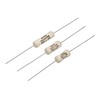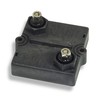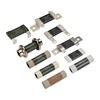Introduction to Different Power Resistor Types
Featured Product from Ohmite Manufacturing Co.
In demanding design parameters, specialized components can be necessary. When the power to dissipate is at least 5 watts, that means power resistors.
All resistors dissipate energy and generate some heat. Power resistors differ in the larger amounts of energy they can burn off as heat, through a challenging application of Ohm’s law. That requires designs that will let the components maintain predictable and stable performance under heavy loads while
Power resistors make regular appearances in such circuits as power supplies, power amplifiers, and power conversion. They’re important in power infrastructure—in transmission and distribution networks—but those aren’t the only applications. They also appear in dummy loads, braking systems for trains using electric motors, automotive applications, snubber resistors to manage current fluctuations, current sensing, bleeders to discharge capacitors, current balancing in semiconductors, and more.
These uses dictate many of the common characteristics of power resistors. They are often larger than other types of resistors to have the physical capacity to handle higher loads, although they are available in many shapes and sizes.
The construction materials not only must provide the necessary resistance but be good at transmitting heat away from the component and to some recipient: forced air, a metal heat sink with or without thermal conductive grease or gel, or an exchanger that can transfer heat to a circulating liquid coolant.
There are seven different types of power resistor construction: composition, ceramic composition, film, foil, wirewound, and element or shunt.






